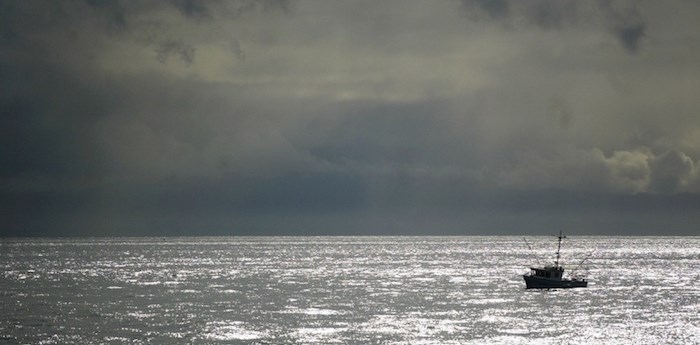Federal safety officials slammed Canada‚Äôs fishing industry Monday over a five-fold increase in fatalities this year ‚ÄĒ including three deaths near Tofino.
The Transportation Safety Board said the industry‚Äôs ‚Äúdisturbing safety record‚ÄĚ has led to 17 deaths in less than 10 months compared with three in all of 2017.
 A fishing boat off Clover Point (Nic Hume/Times Colonist)
A fishing boat off Clover Point (Nic Hume/Times Colonist)
That’s the highest total since 2004 and, while the number of fatalities fluctuates widely, there is no sign of a downward trend, the board said.
The deaths included three men who vanished and are presumed drowned after their unlicensed fishing vessel sank in Duffin Passage near Tofino on June 15. Two passengers in the boat managed to swim to shore.
‚ÄúThe industry‚Äôs safety culture still has a long way to go before its members stop accepting far more risk than necessary,‚ÄĚ said Kathy Fox, chairwoman of the safety board.
She noted that while more people in the industry are recognizing the value of life-jackets and using emergency signalling devices, ‚Äúthere are still many who don‚Äôt.‚ÄĚ
Fox made the comments as the board released its annual list of key safety issues that require government and industry attention.
In addition to flagging concerns about the fishing industry, the board identified employee fatigue as a major safety hazard across all three modes of transportation ‚ÄĒ air, marine and rail. The board said fatigue was identified as a risk or contributing factor in more than 90 of its investigations since 1992.
Transport Minister Marc Garneau said in a statement that new Fishing Vessel Safety Regulations took effect in July 2017 for vessels up to 24.4 metres in length. The regulations updated safety equipment and stability requirements for fishing vessels, while further amendments will tackle vessel construction requirements.
‚ÄúSafety and security are my top priorities, and I share the Transportation Safety Board‚Äôs goal of continuously looking for ways to improve the safety of Canada‚Äôs transportation system,‚ÄĚ he said.
From 2011 to 2017, a total of 63 people died in 47 fishing-vessel incidents, the board said.
Of those deaths, 43 per cent were due to people falling overboard and, in about 80 per cent of the cases, investigators were unable to ascertain whether the victim was wearing a life vest.
Glenn Budden, a senior marine investigator with the safety board in Richmond, said he’s tired of reporting on fatalities in which use of a life-jacket would have saved someone’s life.
‚ÄĚOur reports are pretty formal and whatnot, but sometimes I really want to write: ‚ÄėEnough‚Äôs enough! Come on you guys, I can‚Äôt keep writing this stuff over and over again.‚Äô ‚ÄĚ
Budden echoed Fox‚Äôs concern that while many people are using personal flotation devices, too many are not. ‚ÄúThey have lots of reasons why not: ‚ÄėThey‚Äôre uncomfortable. They catch the gear,‚Äô ‚ÄĚ he said.
‚ÄúI‚Äôve heard fishermen say: ‚ÄėYou know what? We‚Äôre just not used to wearing them. It‚Äôs a hard thing to change. We‚Äôve been fishing for decades without it.‚Äô
‚ÄúThe thought is it will always be the other guy ‚ÄĒ until one of their crew members falls overboard.‚ÄĚ
Budden noted that two drownings off Prince Edward Island in September prompted a number of veteran fishermen to announce that they would start wearing life vests.
‚ÄúIt‚Äôs just too bad that it takes a fatality in a community like that for the community to change,‚ÄĚ he said. ‚ÄúWe should be able to do that without having somebody pass away because of it.‚ÄĚ


